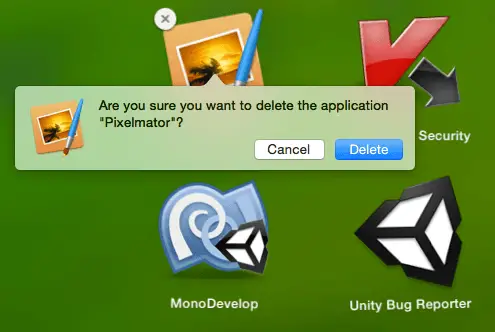Using Add or remove programs wizard we can install new features of the Windows(which are not installed by default) and also uninstall programs that are no longer needed. We can open this wizard from Run window by running the command appwiz.cpl
Deleting An Application On Mac
This appwiz.cpl command can be used from windows command prompt also. This command works on Windows 7 too, though the look of the windows has been changed. The wizard ‘Add or remove features’ window can be opened directly by running the command ‘optionalfeatures‘ from Run.
To Remove Allowed App in Command Prompt To see more usage options for the Netsh AdvFirewall Firewall delete rule command, see: Netsh AdvFirewall Firewall Commands - Microsoft Docs 1 Open an elevated command prompt. 2 Type the command below into the elevated command prompt, and press Enter. (see screenshot below).
If you want to uninstall programs from windows command line, read the post Uninstall programs from command line.

- I already remove the app but I forgot to unpin the app before I remove it. So after remove, the pinned app icon turns to a white paper icon as the image below and cannot unpin it anyway. My question is how I do remove this icon out from my taskbar? It's annoying me to keep taskbar clean. Thank you in advance.
- Command Line will be a weekly post starting with the basics of using Linux on Chrome OS and from there, we will explore all of the possibilities that Linux apps bring to Chromebooks.
- Click on Applications on the left hand sidebar Find the application (s) you’d like to delete Right click and select Move to Trash, click and drag it to the trash, or use the keyboard shortcut.
Resource objects can be deleted using the oc delete command from the command line. You can delete a single resource object by name, or delete a set of resource objects by specifying a label selector.
When an application is deployed, resource objects for that application will typically have an app label applied to them with value corresponding to the name of the application. This can be used with the label selector to delete all resource objects for an application.
Deleting An App On A Mac
To test what resource objects would be deleted when using a label selector, use the oc get command to query the set of objects which would be matched.
If you are satisfied that what is shown are the resource objects for your application, then run oc delete.
Note that all matches on a subset of all resource object types that exist. It targets the core resource objects that would be created for a build and deployment. It will not include resource objects such as persistent volume claims (pvc), config maps (configmap), secrets (secret), and others.

You will either need to delete these resource objects separately, or if they also have been labelled with the app tag, list the resource object types along with all. How to pin an app to desktop.
If you are not sure what labels have been applied to resource objects for your application, you can run oc describe on the resource object to see the labels applied to it.
It is important to check what labels have been used with your application if you have created it using a template, as templates may not follow the convention of using the app Itunes visualizer mactrueufile. label.
Portfolio websites. Note that there is no easy way from the web console to delete all resource objects related to an application. It is recommended you use the command line, and a label selector to identity the resource objects, when deleting an application.
